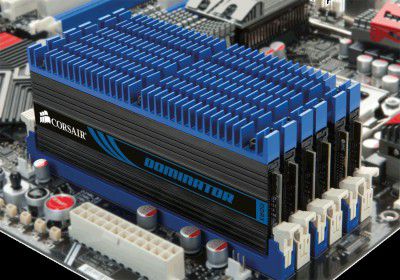Quoted from X-bit Labs...
Although Dominator branding suggests that the 24GB kit is aimed at performance enthusiasts and even overclockers, the new set is designed for workstation users. Firstly, not a lot of consumer applications can take advantage of 24GB of memory; secondly, not a lot of enthusiasts can pay $1349.99 for a memory kit.
So either the kit is $1350.... or it was a general observation that enthusiasts have difficulty paying that much. Either way, a server with the same quantity of ECC memory won't necessarily be cheaper for the same performance on a per app basis. You could make it massively threaded with 2 or 4 CPU's, but single core and limited multi core apps would be kind of pointless. But i would agree with the pricing that this is more of a Workstation setup than an enthusiast. Finance and 3D would easily consume this kind of memory. But still.... ECC is cheaper, as well as having the bonus of error correction, ECC may be slower by 300mhz, but sometimes quantity is more important.
I think the kit is more suited for upgrades rather than new builds. If a company has already invested into an i7 rig for 3d work or some such, trying to get a workstation on the cheap, but still needs the ram, they'd go for the kit (and pay more in the long run). If they were going for a new build, they'd probably go for a dedicated workstation and go with ECC and dual or quad socket rigs.
However, when economies of scale kick in, the price will drop... maybe.
If there wasn't a need for high density ram, no one would make it.... then there wouldn't be 64GB dimms on the market (well, predicted, but finding them is not so easy).
Edit: It was MetaRam.... using some electro trickery to allow more chips per module, effectively doubling or quadrupling the amount of memory per module...


